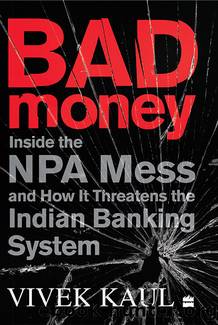Bad Money by Unknown

Author:Unknown
Language: eng
Format: epub
ISBN: 0000000000000
Published: 2020-08-01T15:05:54+00:00
The post of the chairman and managing director of a PSB was split. In the days to come, one individual would be appointed as MD and CEO of a bank and another as its non-executive chairman. This move was in line with the best global practises. Furthermore, individuals from the private sector were also allowed to apply for the posts of MD and CEO of PSBs.
A Banks Board Bureau (BBB) was set up. The BBB, it was said, would be a body of eminent professionals. The former Comptroller and Auditor General Vinod Rai was appointed as its first head. Its job is to appoint the full-time directors as well as the non-executive chairmen of PSBs. The BBB was also expected to ‘constantly engage with the Board of Directors of all the PSBs to formulate appropriate strategies for their growth and development’.²⁶⁴ The BBB started to function from 1 April 2016.
The government also planned to infuse more capital into the PSBs (as we have seen on page 112).
The Indradhanush reforms also talked about taking several steps to de-stress PSBs from the bad loans that they were carrying, particularly those of infrastructure companies. One of the points suggested was that ‘promoters be asked to bring in additional equity in an attempt to address the worsening leverage ratio of these projects’. If the promoters were unable to bring in fresh capital to bring down the leverage, then the PSBs ‘would consider viable options for substitution or taking over management control’.²⁶⁵
This was pretty much the language that the RBI was also using. This was a message to all erring promoters that the RBI and the government were on the same page.
The government also decided to set up six new Debt Recovery Tribunals (DRTs) for the faster recovery of bad loans. This was an important move, as the DRTs were dealing with a huge backlog of cases. In 2013–14, the amount recovered from cases decided by the DRTs had stood at Rs 32,000 crore. The debt that was sought to be recovered had stood at Rs 2,63,021 crore. Hence, the recovery rate was a measly 12.1 per cent.
Also, the law indicates that cases brought to the DRT should be decided upon within six months. Nevertheless, at that point of time, only one in four cases pending before the DRT at the beginning of any year was decided upon during the course of that year. This suggested that it could take four years to clear all the cases, if the DRTs just concentrated on old cases alone. In fact, in 2013–14, the number of cases filed during the course of the year was one-and-a-half times the number of cases decided upon during the course of the year.²⁶⁶
Download
This site does not store any files on its server. We only index and link to content provided by other sites. Please contact the content providers to delete copyright contents if any and email us, we'll remove relevant links or contents immediately.
Effortless by Greg McKeown(1464)
Word Power Made Easy by Norman Lewis(1293)
How to Not Die Alone by Logan Ury(1293)
Beyond Order by Jordan B. Peterson;(1287)
So Good They Can't Ignore You by Cal Newport(1204)
Chatter by Ethan Kross(1046)
100 Things Successful People Do by Nigel Cumberland(1016)
The Power of 100! by Shaun King(988)
Master of One by Jordan Raynor(987)
Lives of the Stoics by Ryan Holiday & Stephen Hanselman(949)
Napolean Hill Collection by Napoleon Hill(922)
The High 5 Habit by Mel Robbins(914)
The Art and Science of Results by Joe Vitale(886)
Be Your Best Self by Mike Bayer(875)
Kinesic Magic by Donald Tyson(834)
Friday Forward by Robert Glazer(822)
Career Fear (and how to beat it) by Somi Arian(810)
The Practice Is the Path by Tias Little(807)
The 7 Habits on the Go by Stephen R. Covey(804)
